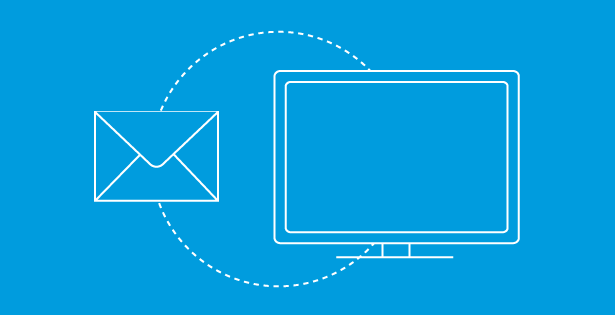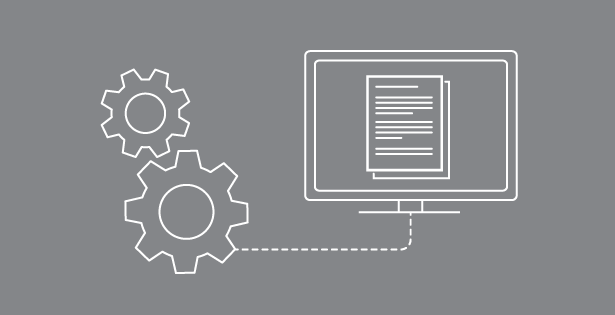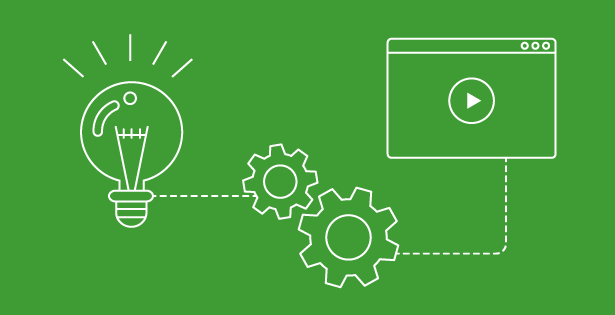As you may have heard, Microsoft is busy preparing for it next big operating system release, Windows 10. Over one billion of us use Microsoft Windows for personal and business use, yet we are not all on the same version. Our preferred operating systems span Windows 7, Windows 8 and even Windows XP deployments. We all also use a variety of Microsoft Office products, spanning Office 2003, 2007, 2010, 2013 versions. Microsoft’s next big shift is to move all Windows users to a common, cloud-delivered operating system, Windows 10.
Windows 10 utilizes the same successful strategy as Office 365
Not too long ago businesses seeking to leverage technology for competitive advantage had to build and maintain their own IT platform in-house. The platform provided core services such as email, file sharing, collaboration and security for their workforce. Investments were made in server hardware, software, and finding specialized talent in Microsoft’s core server products such as Active Directory, Exchange and SharePoint server.
Microsoft recognized that businesses of all sizes needed these core services to thrive in our modern business world. The need to build an IT platform in-house was just simply not feasible for all businesses. Office 365 was developed by Microsoft to meet this need.
Microsoft server products as a cloud-based service
Office 365 represented the first major shift by Microsoft in its strategy to provide all businesses simplified productivity and collaboration services from the cloud. With Office 365, businesses no longer need to invest the capital costs or be responsible for the complexities of the server products. Office 365 services may be utilized from a bold startup of only a few entrepreneurs to the largest corporations employing hundreds of thousands of users all over the world.
Windows 10 as a cloud-based service
Windows 10 is Microsoft’s next big shift in strategy toward a simplified and empowering computing experience. With the success Office 365 achieved as a cloud-based platform for productivity services, Windows 10 will do the same where it is most important – on our personal computers. Windows 10 will deliver our familiar desktop, applications, data and the information services we utilize every day to accomplish our critical business tasks, using the same cloud-based technology.
One familiar experience across all of your devices
Microsoft has designed Windows 10 to be the single operating system for all of your computing devices including desktops, laptops, tablets and phones. Large-format touch and projection screens commonly found in conference rooms are supported.
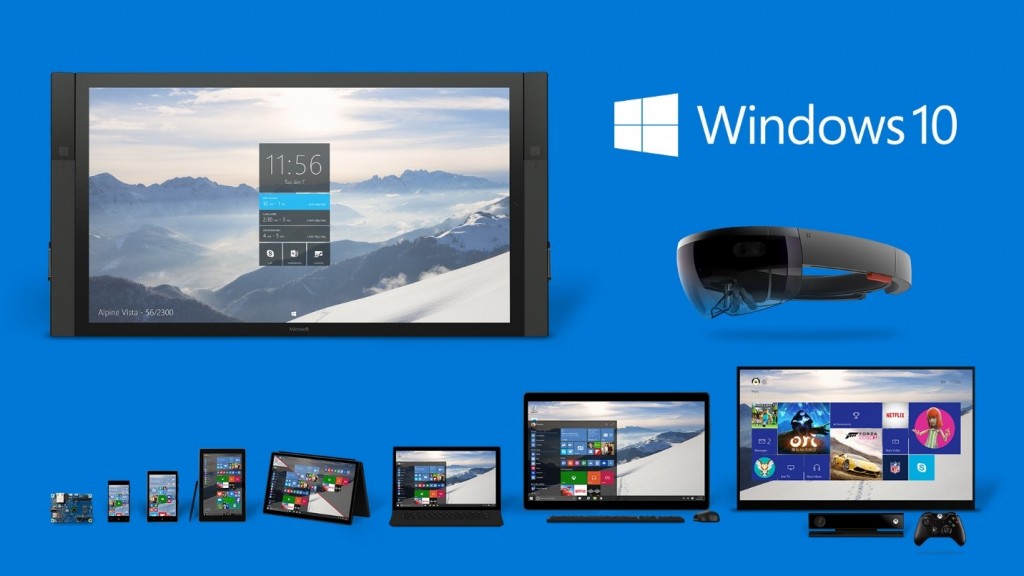
(Above) Windows 10 provides a consistent computing experiences across a full range of devices
Your work, applications and data remain easily accessible and secure as you move from device to device. Even while at home Microsoft has designed Windows 10 “Universal” applications and all of your favorite documents and photos to be available on your Xbox One console and large screen television.
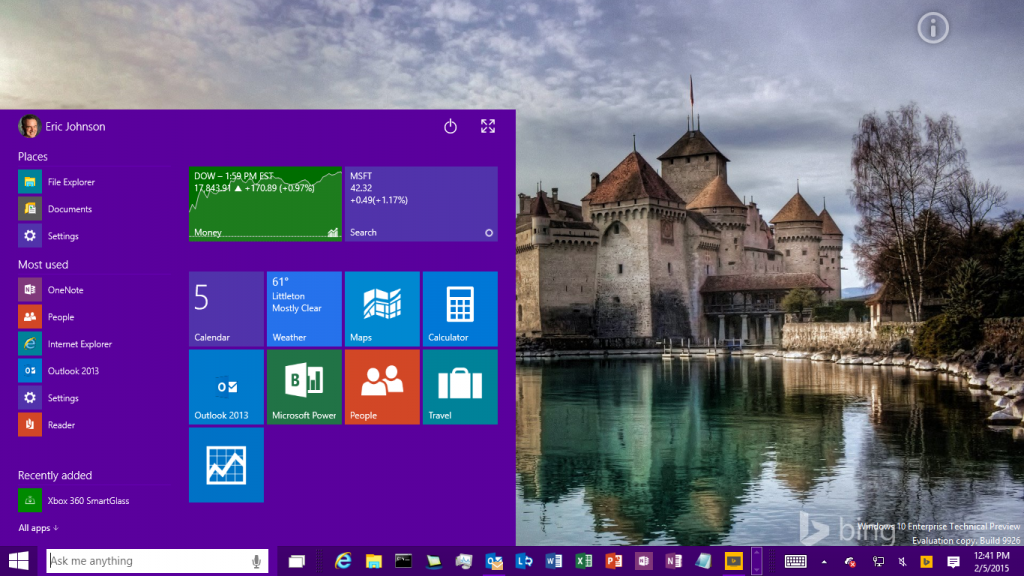
(Above) Familiar functionality such as the Windows desktop and Start Menu have been enhanced for quick access to the programs and information you use the most.
The road to Windows 10
Microsoft has an ambitious goal to migrate 850 million users to its new flagship operating system within the first year of its release. Here are some of the key benefits Microsoft will entice customers to move to Windows 10.
- Free upgrade path for all Windows 7, Windows 8.1 and Windows Phone 8.1 users for one year after the Windows 10 launch
- A seamless upgrade and transition from supported operating systems
- Continuous upgrades for the supported lifetime of your devices at no additional charge
- Always up-to-date via a cloud-based platform
Built for your business
Microsoft is determined to make Windows 10 the best operating system for business users.
Accessibility and Convenience
- Your work is with you, when and where you need it
- Put one device down, pick up another, and continue where you left off
Security
- Your work is protected with exceptional security, yet is easy to share. You remain in control.
- Corporate data remains secure as it moves easily from device to device.
- Microsoft is committed to respecting your privacy and protecting your intellectual property.
Compatibility
- Full backwards-compatibility with all of your windows applications
- New Windows “Universal apps” run on all of your devices, sharing common functionality but also exploiting the unique capabilities of each
- Browse the Windows App Store to find new applications to help you achieve your goals
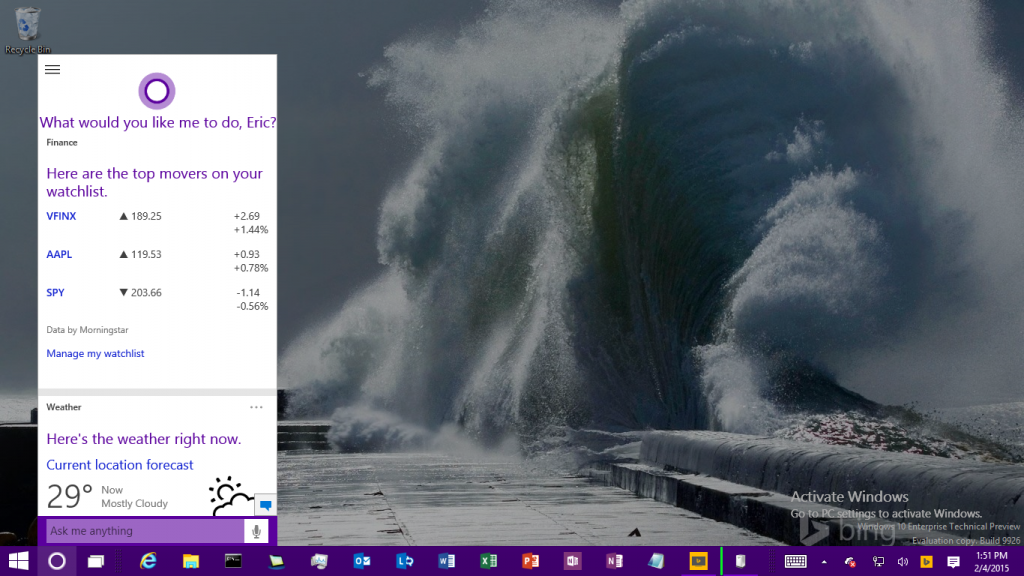
(Above) Microsoft has built Cortana, your personal assistant into the Windows 10 operating system.
Built for new computing experiences
Microsoft has also demonstrated exciting new ways to use Windows 10 to stay informed, search for information and accomplish your work:
- Cortana, the digital assistant found in Windows Phones is now integrated within Windows 10
- Complete work and tasks with natural interactions using voice, pen, gestures and gaze
- New capabilities “once considered science fiction, are now science fact” enabled through holography and virtual reality
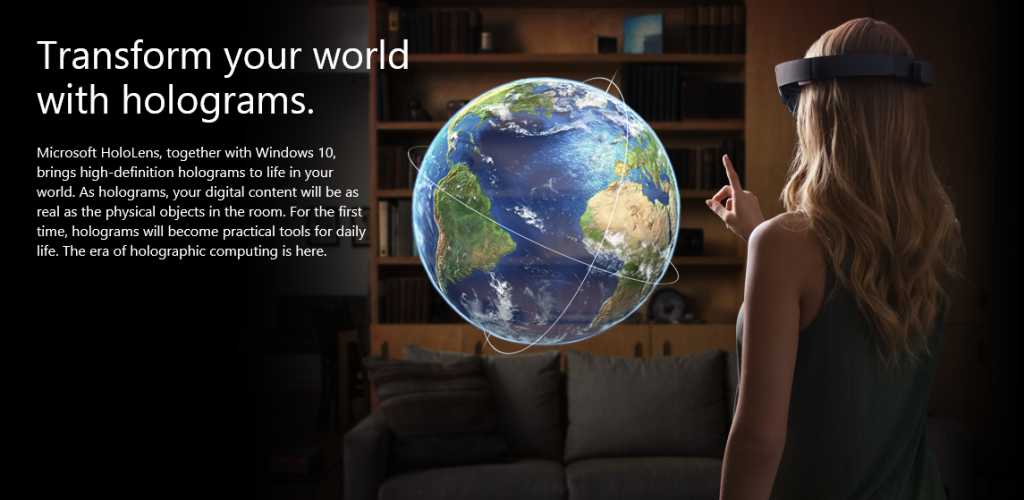
(Above) Microsoft’s HoloLens will enable holographic user-interfaces built with Windows 10
Microsoft envisions Windows 10 to be the intersection of all of our positive experiences and expectations of the present and the past, yet still customized to each of our individual preferences. This time however, Microsoft is making the bet that nearly all of us will move forward together on a common and exciting new platform, Windows 10.
We’ve taken a broad look at the bold vision Microsoft has for Windows 10. In future articles we will further explore select and exciting capabilities that enable real-world scenarios to empower you to reach your business goals, collaborate with customers and partners, and leap ahead of your competition.
We would love to assist you with developing a roadmap towards being prepared to take advantage of Windows 10 for your business. To learn more about Windows 10 or for more information on RSM’s offerings please check out our website. You can also contact RSM’s technology consulting professionals at 800.274.3978 or email us.

 RSMUS.com
RSMUS.com